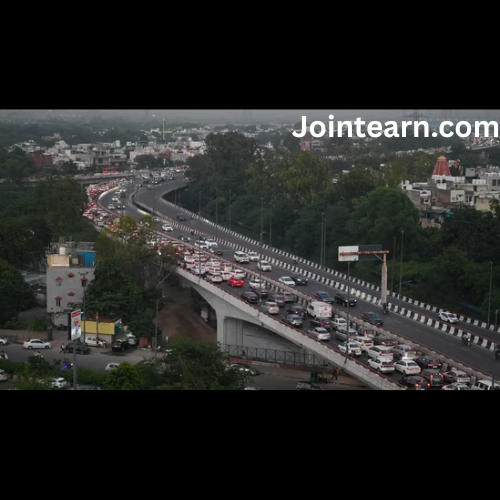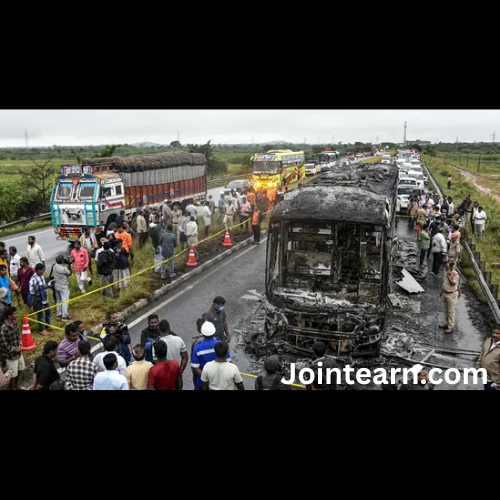
In a significant move aimed at tackling long-standing traffic bottlenecks in West and Northwest Delhi, the Delhi government’s Public Works Department (PWD) has announced plans to construct three new flyovers along the Outer Ring Road and adjoining corridors. The projects are part of a broader decongestion strategy designed to streamline vehicular movement, reduce travel time, and improve road connectivity with the newly opened Urban Extension Road-II (UER-II).
Officials confirmed that feasibility studies for all three proposed flyovers will be launched soon, with a total cost exceeding ₹10 crore. These studies will assess the technical, environmental, and economic viability of each project before detailed project reports (DPRs) are prepared. The flyovers are proposed at three critical stretches — Kanjhawala Chowk to Mangolpuri, Keshopur Depot to Haiderpur, and Sagarpur to Mayapuri Chowk — all key points of congestion on the Outer Ring Road network.
1. Kanjhawala Chowk to Mangolpuri: Linking Outer Ring Road with UER-II
The first and perhaps the most strategically important of the three flyovers will connect Kanjhawala Chowk to Mangolpuri, providing a direct link to the recently inaugurated Urban Extension Road-II (UER-II). This new connection is expected to relieve heavy traffic flow between Rohini, Mangolpuri, and the western outskirts of Delhi, offering smoother access to the national highways connected by UER-II.
According to PWD officials cited by PTI, the 10-kilometre corridor will cover several busy intersections, including Kanjhawala Chowk UER-II, Sector-22 Rohini (Begumpur), Y-Block Mangolpuri, and Pathar Market.
A feasibility study worth ₹3.4 crore has been sanctioned for this stretch, and the department expects to complete the Detailed Project Report (DPR) within six months. Once operational, this flyover will play a key role in linking West Delhi’s dense residential and commercial zones with the city’s expanding expressway network, especially the Delhi–Jaipur and Delhi–Karnal corridors connected through UER-II.
Officials added that the corridor will be designed to reduce congestion at key intersections, where traffic snarls are common during peak hours due to mixed vehicular flow and limited road width.
2. Keshopur Depot to Haiderpur: A 17.5-km Flyover Along the Supplementary Drain
The second and longest of the proposed projects will run along the Supplementary Drain, starting near Keshopur Depotand extending up to Haiderpur on the Outer Ring Road — a 17.5-kilometre stretch passing through several major industrial and residential zones of Northwest Delhi.
This corridor, already burdened by high traffic volumes and encroachments, is expected to see major relief once the flyover is constructed. The feasibility study for this project has been budgeted at ₹5.6 crore, making it the most expensive among the three.
According to the tender details, the feasibility study will involve a comprehensive survey of the corridor, covering aspects such as building mapping, existing road geometry, encroachments, tree cover, road signage, and other physical features.
A senior PWD official explained that the study will also include a cost-benefit analysis, taking into account economic, environmental, and social factors to determine the long-term impact of the project. “The consultant will assess how many trees are likely to be affected and how many can be preserved through transplantation. Environmental clearances will be a crucial part of the planning process,” the official said.
Once completed, this flyover will provide a continuous elevated corridor linking West and North Delhi, reducing travel time for commuters moving between major intersections like Keshopur, Wazirpur, and Haiderpur. It is expected to significantly decongest the existing Outer Ring Road, where traffic is often disrupted due to bottlenecks at flyover merges and road diversions.
3. Sagarpur–Mayapuri Flyover: Addressing Congestion in Southwest Delhi
The third proposed project involves constructing a 4.3-kilometre flyover between Sagarpur and Mayapuri Chowk, another busy stretch frequently choked by mixed traffic, encroachments, and intersections. However, officials have acknowledged that this section poses several engineering and logistical challenges.
The proposed alignment runs close to the Tihar Jail complex boundary wall and is also intersected by a high-tension power line, both of which complicate the construction process. Additionally, the area faces significant space constraints, with approximately 300 trees standing along the route and the Right of Way (ROW) varying at several points due to encroachments.
“Several encroachments and infrastructure obstacles exist along the proposed route, and these will be properly assessed during the feasibility study. The study will help finalise design options, including possible realignments, to minimise displacement and environmental impact,” said a senior PWD official.
The feasibility study for this project will cost ₹1.3 crore and, like the others, is expected to be completed within six months. Once implemented, the flyover will offer smoother connectivity between Sagarpur, Mayapuri Industrial Area, and Naraina, easing traffic congestion on the road leading towards the Ring Road and South Delhi.
Broader Plan: Reducing Congestion and Improving Connectivity
The three proposed flyovers are part of the Delhi government’s long-term traffic decongestion plan, which seeks to improve the efficiency of the capital’s arterial roads by integrating them with newly built expressways like the UER-II and Dwarka Expressway.
UER-II, inaugurated earlier this year, is expected to play a crucial role in diverting heavy vehicles away from the city’s core and improving connectivity between Delhi and Haryana. The new flyovers will complement this by creating smoother access routes for intra-city travel, particularly between the western and northern districts.
Officials said that once the feasibility studies are completed and the DPRs finalised, the PWD will move forward with detailed design and construction plans. The department also plans to coordinate with agencies like the Delhi Development Authority (DDA), the Forest Department, and the Delhi Traffic Police to ensure minimal disruption during implementation.
The projects will undergo multiple rounds of technical vetting, including structural design reviews, environmental clearance assessments, and public consultations. After the final approval, the tendering process for construction contracts will begin.
Environmental and Social Considerations
Officials emphasised that all three studies would include environmental impact assessments, particularly regarding tree felling and air quality concerns. The PWD plans to identify trees that can be transplanted rather than cut, and to propose compensatory plantation measures for those that cannot be saved.
In addition to environmental concerns, the studies will evaluate social impacts, such as land acquisition requirements, relocation of affected vendors, and rehabilitation measures for displaced structures. These findings will be incorporated into the DPRs before construction begins.
Expected Outcomes
Once built, the three flyovers are expected to provide substantial relief to Delhi’s overburdened Outer Ring Road network, which sees some of the highest traffic volumes in the city. The PWD estimates that travel time along these stretches could reduce by up to 30–40%, depending on peak-hour congestion.
The projects will also help in reducing vehicular emissions, enhancing road safety, and boosting connectivity between West, Northwest, and Southwest Delhi. By linking UER-II with the city’s internal roads, the flyovers will play a crucial role in establishing seamless connectivity between the capital and adjoining regions of Haryana.
According to PWD officials, these flyovers collectively represent a forward-looking approach to urban mobility planning in Delhi. “With the completion of these projects, the Outer Ring Road will witness smoother and safer movement for both daily commuters and long-distance travellers. This is part of our effort to make Delhi’s road network more efficient, sustainable, and future-ready,” a senior official said.
The studies, scheduled for completion within six months, will mark the first step toward transforming one of Delhi’s most congested traffic corridors into a modern, high-capacity urban roadway system.


Leave a Reply